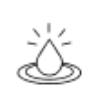The G-spot doesn't exist...
...at least, not according to recent science news headlines. But here's why you shouldn't take them at face value.
Scientists actually just gave the G-spot a better name. The new name? "Clitoral Urethral Vagina Complex" or "CUV."
But why the change?
Science in Service to Pleasure
In recent years, our understanding of the "G-spot" and how and why it works has improved.
Sex researchers felt the name "G-spot" was causing women & their partners to search in vain for a magical "spot," rather than appreciating the complex interplay of multiple aspects of female sexual anatomy.
With that in mind, here's a review of these well-known erogenous zones — as a map for informed exploration...
All Hail the Clitoris
New imaging technology has revealed the true profile of the mighty clitoris.
The clitoris has about 8,000 nerve endings — more than anywhere else in the female body, and almost double the nerve endings of a penis.
Filled with spongy erectile tissue (just like the penis) the clitoris is the only organ in the body solely dedicated to pleasure.

Unlike the drawings in your high-school sex ed class, the clitoris is not just a small button positioned at the upper junction of the labia.
Instead, it's a large, wishbone-shaped organ extending wings along the pubic bone and back around the opening of the vagina. These larger two wings actually contribute to the swelling and pleasurable sensation around the labia, vaginal opening, and lower section of the vagina.
This deeper anatomy suggests there are more approaches beyond just direct & indirect stimulation of the clitoral shaft & head.
Massaging the inner thighs, the mons veneris, and the labia are essential warmup and stimulation for the clitoris. Additionally, contraction & release of the pelvic floor muscles can create deep clitoral pleasure and enhanced orgasmic access.
Experiment and see what works best for you!
Why the G-Spot isn't a Spot
Most sources describe the "G-Spot" as an area about 2-3 inches up the front wall of the vagina, that swells during arousal and responds intensely to a "come hither" finger-stroke.

This swelling turns out to be caused by the "urethral sponge" or the "female prostate," a series of glands between the bladder, urethra, and vagina. The location and size of these glands varies in all women, and display widely different patterns of swelling — which explains why they're sometimes hard for partners to locate.
Stimulation and compression of these glands is sometimes the source of "squirting" during orgasm — but that should never be viewed as the "goal" of pleasuring, since goals can create tension and pull you out of the moment.
At the same time, many women resist these beautiful releases, mistakenly believing that it's pee! If this is you, grab a towel next time, and experiment with "bearing down" while stimulating your "non-existent" G-spot!
An Ode to Pleasure
So... the "non-existent G-Spot" is actually a beautiful partnership of the urethral sponge and the mighty clitoris! Fortunately, there are multiple ways to stimulate these areas — alone or in combination — leading to a wide variety of pleasurable & orgasmic experiences!
Exploring your body's response to stimulation — alone or with a partner — you may be able to feel an increase in sensation and arousal, and develop a connection with your own self that increases your capacity for pleasure.
Check out some deeper sexual anatomy, or read about the best way to approach therapeutic vaginal massage.
Want more? Sign up for our newsletter
By entering your email, you are agreeing to our terms and conditions and understand our privacy policy.









